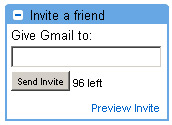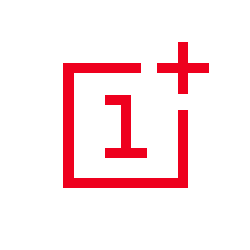One of the best things about the four-odd years that I worked at 20:20 MEDIA was the lunch time. Not necessarily for the food that all of us shared, though that as well. It was primarily because Naru would be around. Almost all in the Chennai branch would look forward to hearing his stories and lessons on almost everything in life. They provided great intellectual stimulation and, yet, were amusing at the same time.
Pointing to the food laid on the table he would often say, "First go for the item that is least available. After that anything else."
For a long time, I didn't understand the profoundness in the statement. Now, it does. It is based on the fundamental economic principles of supply and demand. When something is available in short supply, the demand tends to be more. So it makes good economic sense to grab the item before anyone else does. What is available in plenty can be had at leisure.
Google is one company that has used this as a tactic quite effectively by creating "artificial scarcity" while launching products. You see the conventional wisdom during a product launch will be to make it available to everyone instead of restricting supply. But on the other hand, Google creates excitement in the market and makes customers yearn for its products. They probably understand well that as human beings we tend to value things that are difficult to come by. Also, our natural tendency is to show off what has been so acquired. And thus, they are able to create a pull even to their commodity product, such as Gmail, and to concepts that are rather innovative, such as Wave.
 Today, Gmail is available to anyone. But way back in 2004, when it was launched in 2004, it was only through invites. It was not available for everyone. You couldn't go to its site and sign up for it. Some "blessed ones" received the invite from Google to use it. And these would get invites that they could share with others. And that's how Gmail percolated.
Today, Gmail is available to anyone. But way back in 2004, when it was launched in 2004, it was only through invites. It was not available for everyone. You couldn't go to its site and sign up for it. Some "blessed ones" received the invite from Google to use it. And these would get invites that they could share with others. And that's how Gmail percolated.
Since then, Google has used this invite strategy for important launches. But somehow Wave didn't create a "buzz". Then again Google Plus used the same approach. I have no clue whether Google Plus is a success or not. At least, I don't take it as seriously as Facebook or Twitter. But that is not failure of the launch tactic by itself. Actually, the approach did create the necessary excitement.
So when recently a friend, with whom I had apparently shared the precious Gmail invite 10 years ago, shared an Inbox invite as reciprocation, I wasn't greatly excited due to the history of continuous disappointments. But I was certainly keen to check it out.
While Inbox does roll many functions into one app and does make sense to use it, I only ended up uninstalling it. Interestingly, I do use Gmail and Google Calendar quite a bit. Still, Inbox isn't appealing. Probably that I am hooked to Gmail and see it another app doing the same job a waste on the precious storage space on my phone.
On the other hand, I find Google Now, which among other things also picks up information from my Gmail and presents on home screen, more useful.
When I read that OnePlus One is also using the same invite tactic, I was a bit amazed. Is this a good approach for a hardware company? While the reviews do say they are great value for money, why would the brand not rush the product to the market? Are customers so excited about it that they don't mind putting their buying decision on hold till an invite pops up? Aren't there brands which have better pull and probably offer the same or better proposition?
Will OnePlus One become the Gmail of hardware or will it fizzle like Wave needs to be seen in the coming days!
Pointing to the food laid on the table he would often say, "First go for the item that is least available. After that anything else."
For a long time, I didn't understand the profoundness in the statement. Now, it does. It is based on the fundamental economic principles of supply and demand. When something is available in short supply, the demand tends to be more. So it makes good economic sense to grab the item before anyone else does. What is available in plenty can be had at leisure.
Google is one company that has used this as a tactic quite effectively by creating "artificial scarcity" while launching products. You see the conventional wisdom during a product launch will be to make it available to everyone instead of restricting supply. But on the other hand, Google creates excitement in the market and makes customers yearn for its products. They probably understand well that as human beings we tend to value things that are difficult to come by. Also, our natural tendency is to show off what has been so acquired. And thus, they are able to create a pull even to their commodity product, such as Gmail, and to concepts that are rather innovative, such as Wave.
 Today, Gmail is available to anyone. But way back in 2004, when it was launched in 2004, it was only through invites. It was not available for everyone. You couldn't go to its site and sign up for it. Some "blessed ones" received the invite from Google to use it. And these would get invites that they could share with others. And that's how Gmail percolated.
Today, Gmail is available to anyone. But way back in 2004, when it was launched in 2004, it was only through invites. It was not available for everyone. You couldn't go to its site and sign up for it. Some "blessed ones" received the invite from Google to use it. And these would get invites that they could share with others. And that's how Gmail percolated.Since then, Google has used this invite strategy for important launches. But somehow Wave didn't create a "buzz". Then again Google Plus used the same approach. I have no clue whether Google Plus is a success or not. At least, I don't take it as seriously as Facebook or Twitter. But that is not failure of the launch tactic by itself. Actually, the approach did create the necessary excitement.
So when recently a friend, with whom I had apparently shared the precious Gmail invite 10 years ago, shared an Inbox invite as reciprocation, I wasn't greatly excited due to the history of continuous disappointments. But I was certainly keen to check it out.
While Inbox does roll many functions into one app and does make sense to use it, I only ended up uninstalling it. Interestingly, I do use Gmail and Google Calendar quite a bit. Still, Inbox isn't appealing. Probably that I am hooked to Gmail and see it another app doing the same job a waste on the precious storage space on my phone.
On the other hand, I find Google Now, which among other things also picks up information from my Gmail and presents on home screen, more useful.
When I read that OnePlus One is also using the same invite tactic, I was a bit amazed. Is this a good approach for a hardware company? While the reviews do say they are great value for money, why would the brand not rush the product to the market? Are customers so excited about it that they don't mind putting their buying decision on hold till an invite pops up? Aren't there brands which have better pull and probably offer the same or better proposition?
Will OnePlus One become the Gmail of hardware or will it fizzle like Wave needs to be seen in the coming days!


No comments:
Post a Comment